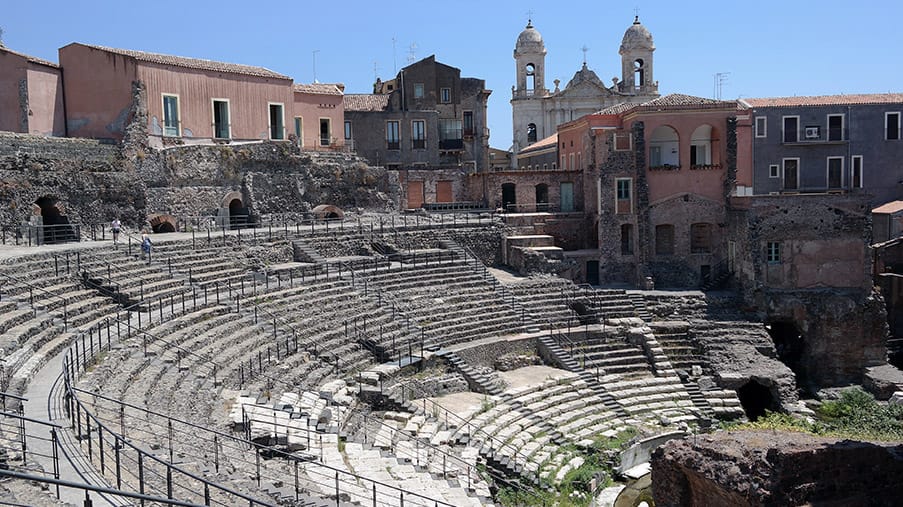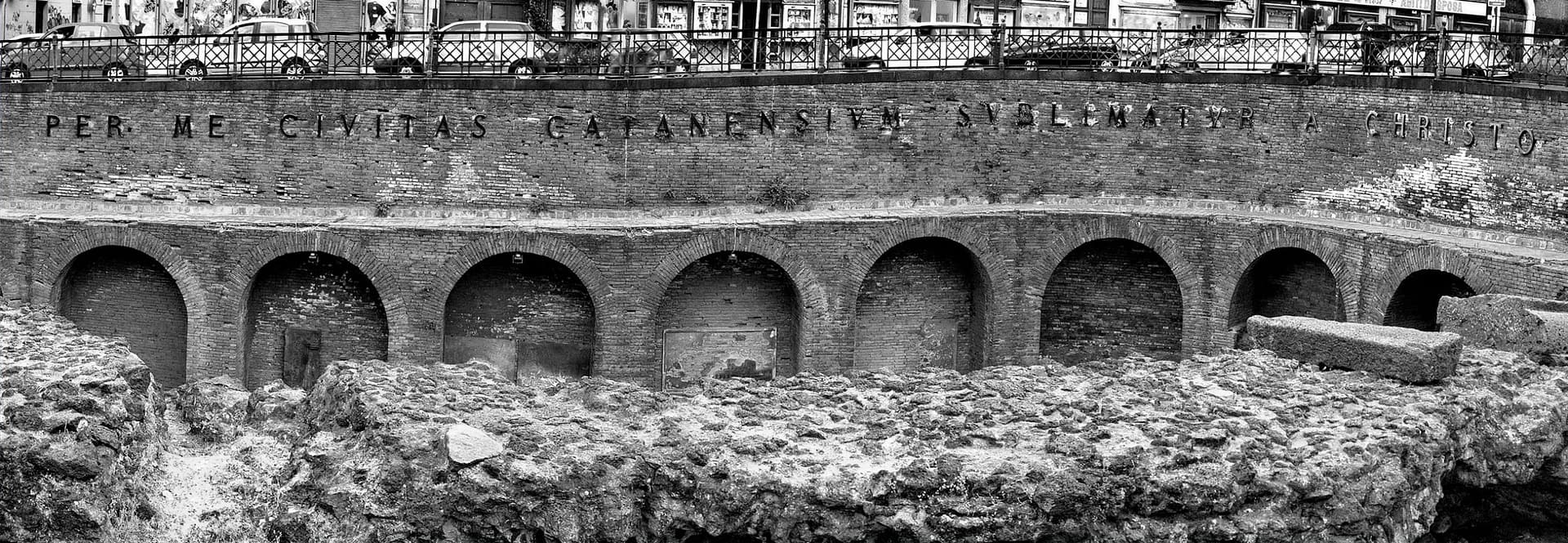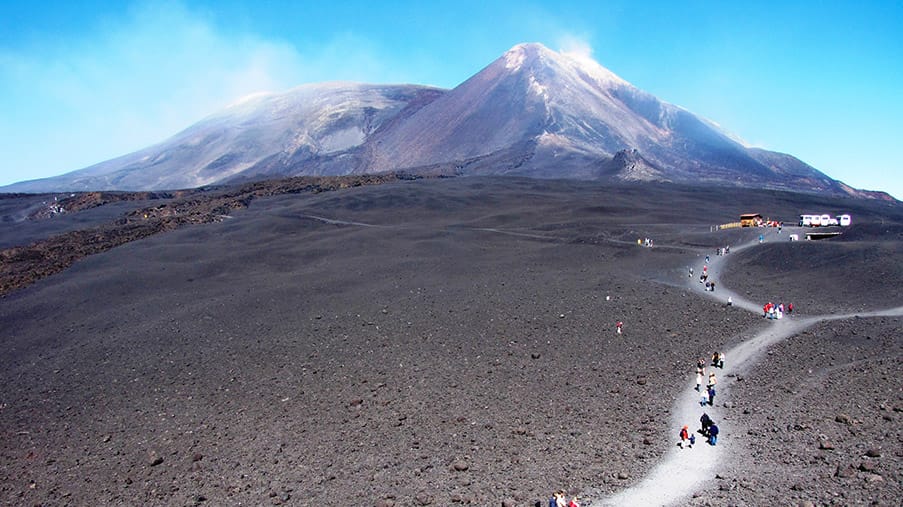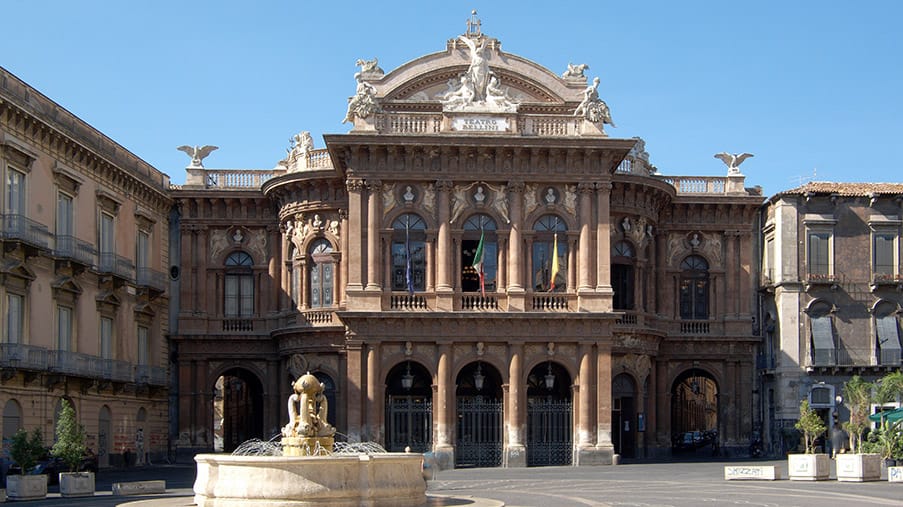
Roman Theatre
The Amphitheater is a grandiose Roman structure (surpassed only by the Colosseum) which probably dates back to the 2nd century AD: it could hold up to 16,000 spectators. Today, from Piazza Stesicoro, only a part of the cavea, the edge of the orchestra and a few remains of the scene are visible. Built with lava materials, mixed cement mortar, it had white limestone seats and precious white marble coverings.
The Roman theater of Catania is located in the historic center of the Etna city, between piazza S. Francesco, via Vittorio Emanuele, via Timeo and via Teatro greco. Its current appearance dates back to the 2nd century and was brought to light from the end of the 19th century. To the east it borders a minor theater, called the odeon. It is assumed that the theater could accommodate about 7000 spectators and that it was built on a pre-existing structure of the Greek age built in the ancient acropolis of Catania. In a diameter of about 80 meters, the orchestra, the cavea and some parts of the scene are still visible. The theater was stripped of the marbles and stones that made it up in 1098, at the behest of Count Ruggero, in order to speed up the construction of the Cathedral of Sant’Agata.
The finds recovered during the excavations of the seventeenth century are kept in the Municipal Museum. Due to the various lava eruptions and earthquakes, over time the ground level has dropped and today the lower part of the building, especially the orchestra area, is bathed by the waters of the Amenano, the river that flows underground to the city, which prevents the use of the theater for contemporary performances. Many materials from the theater have been reused in various eras in medieval and modern city buildings. In particular, numerous marbles were used for the construction of the Norman cathedral. Sculptures and inscriptions, recovered in the excavations, are exhibited in the Castello Ursino Museum. The Roman Odeon is located west of the theater and was intended to host musical and oratory performances. Its chronology is not specified, it was certainly erected after the main building, the building material for the most part from lava stone, showing a remarkable decorative effect thanks to the contrast between the black stone blocks and the brick and marble inserts.









